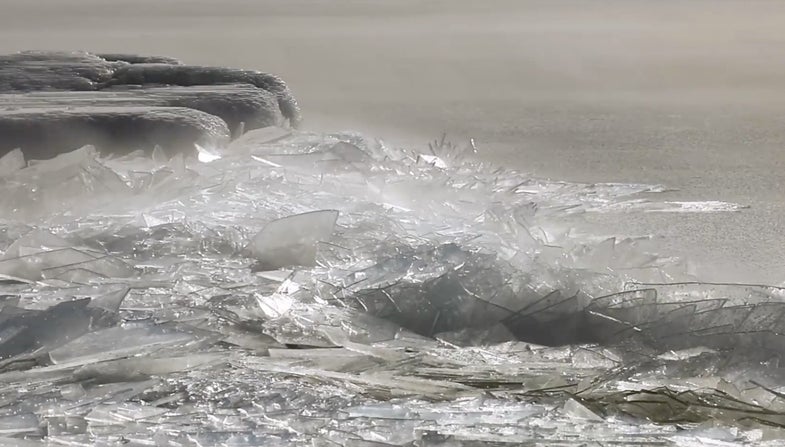Why Lake Superior’s Ice Looks Like A Pile Of Broken Glass
Very cool science


Recipe for ice stacking: Take cold weather, a large lake, and mix thoroughly using a brisk wind. You should see piles of jagged ice panes appear on the edges. Best served while wearing many layers of clothing to keep out the chill.
The visual feast in the video above was made possible by the weather on Lake Superior, which froze just enough to create a relatively thin layer of ice on the lake’s surface. When the wind blew in at speeds of 12-15 miles per hour, the sheets of ice were flung towards shore, shattering or the edges and creating the pile of ice seen here.
In her YouTube caption of the video, photographer Dawn M. LaPointe of Radiant Spirit Gallery wrote:
While the above ice stacks make for a lovely diversion, ice heaves, their bigger cousins can be far more destructive. Ice heaves occur when the ice on the lake is thicker, and the wind pushes the large slabs onto land.
Watch what happened in Minnesota in 2013, when a wall of shattered ice engulfed homes along the shore, causing massive amounts of damage:

And this isn’t the only weird ice occurrence in the Great Lakes region. Over in Lake Michigan in 2014, ice formed perfectly neat balls, sprinkling the frigid waters with boulder-sized spheres. The ice balls were formed in the rolling waves, growing from a nucleus of ice that slowly got coated with more and more frozen water, growing like very cold pearls in the lake.
